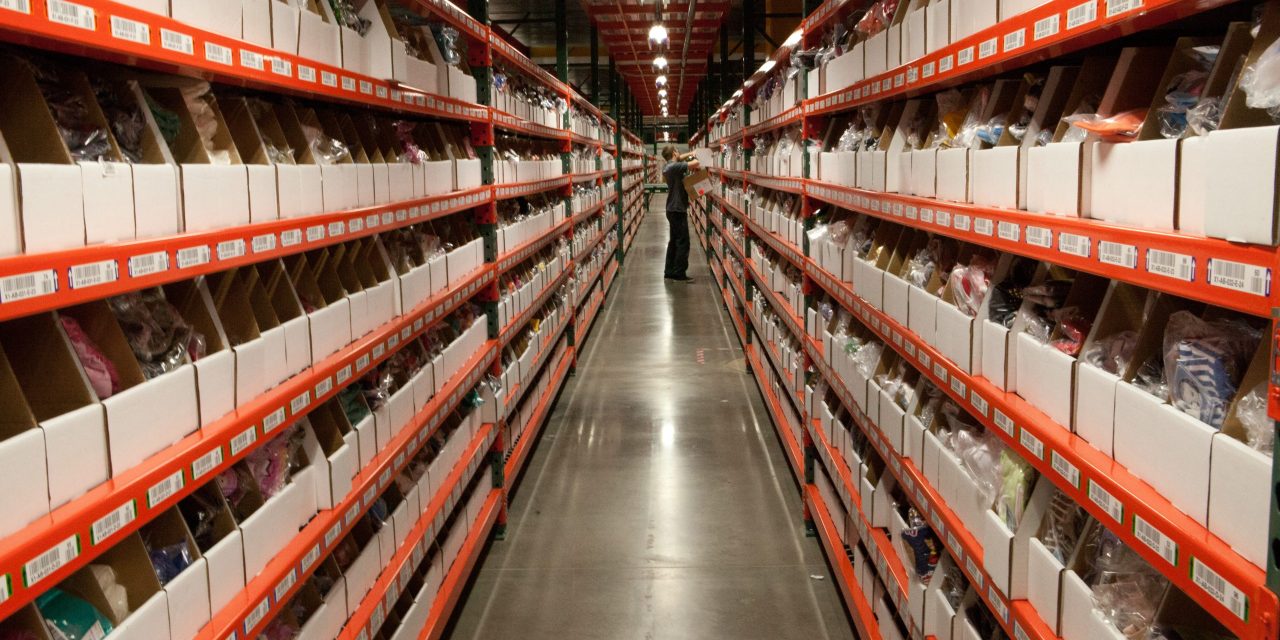Unpacked: Why more brands are splitting shipping containers to cut costs

As supply chain shortages continue to send shipping prices surging, larger brands are starting to embrace a form of transporting products that is typically reserved for smaller brands.
That approach is called less-than-container load shipping, or LCL, and it involves multiple brands splitting the cost of a single shipping container. Rather than shipping their products from overseas all together in a single container, they spread those shipments out across a series of partially full containers.
When manufacturers or brands ship products from, say, China to the U.S., they store them in large shipping containers, which are loaded onto freight ships. LCL has long been popular among smaller brands that don’t have the volume to justify paying for a full container. Larger brands or retailers typically buy out a full-size container to store only their own products, but increasingly, companies of all sizes are gravitating toward a split container system.
As recent research from online freight marketplace Freightos demonstrated, LCL shipments have more than doubled in popularity since the start of the pandemic — a trend that points not just to the rising popularity of LCL itself, but also highlights the extent to which brands are still scrambling to manage a highly volatile and expensive international freight system.

(chart via Freightos)
It isn’t just Freightos finding this trend: the German freight company Dachser wrote in October that, among its clients, “demand for accelerated LCL services in particular is rising during the Covid-19 pandemic.” Meanwhile, the Danish shipping giant Maersk added LCL services last fall because of growing interest, and this summer, freight forwarding companies, like Flexport, have increasingly pushed their clients toward LCL.
One big reason for the rise of LCL is that, even a year and a half after the pandemic first spread across the globe, the cost of containers remains astronomically high. Eze Fiszerman, senior director of supply and operations at Freightos, said that before the pandemic, a typical shipping container might cost $4,000 to $5,000, but the price has shot up to $25,000 to $27,000 per container today. “Now we are many, many times more than [$4,000],” he said. By contrast, LCL costs have remained relatively stable throughout the pandemic, and “I think that that only reinforces the value that people are seeing in LCL,” he said.
LCL is not only catching on because of pandemic-era supply chain constraints. Even before 2020, it was growing in popularity in tandem with the rise of e-commerce: as more and more small sellers began to offer products online that were manufactured in places like China but sold to U.S. consumers, LCL became an attractive option. Those sellers didn’t have the budget or inventory to pay for full containers, so they opted for the split rate instead. Those trends are still continuing — and the ballooning cost of container shipping is just accelerating them.
But the difference since the pandemic began, said Fiszerman, is that larger brands are beginning to give LCL a second look. Whereas it used to be mostly an option for small- and some mid-sized sellers, now even larger companies are opting to split the bill with other companies (though Fiszerman declined to name examples of brands that made this switch).
“Bigger companies now are looking at it in a much more friendly way,” he said. “There’s no need to spend $20,000 on a container if you have to replenish some stock. You can always use these kinds of tools [like LCL] to take advantage of them.”
He said that the truly giant companies — a retailer like Walmart, for instance — still aren’t batting an eye at the price tag of a container, both because they have the resources and volume to make paying for full containers make sense. Furthermore, major companies that are concerned about container delays have taken other, creative approaches to shipping internationally: Peloton has focused more heavily on air freight, despite the higher cost, whereas Home Depot charted its own container ship to avoid delays. But LCL is catching on with companies a level or two below that in size.
When a company shifts from shipping all of its products in a single container to mixing and matching with LCL, it doesn’t necessarily make a difference for the end consumer, said Fiszerman. Less-than-container loads are still facing the same delays as every other container that ships from China to U.S.
The difference is more on the backend. When brands opt for LCL, it means they have to pay more attention to their logistics operations, given that shipping products across partially full containers involves more moving parts. “It’s much easier when you’re able to bring a full container of goods, but if you’re going to move your operations to be a little more dependent on LCL, then you’re going to have to do a higher number of shipments,” he said.
That leaves a higher potential that something might go wrong — and requires brands to plan even further in advance to ensure their inventory is ready for a major sales period like, say, the holidays.
